Popular Chinese Cuisine: Szechwan
Sichuan cuisine, is also known or spelled as Szechwan cuisine, or Szechuan cuisine (/ˈsɛʃwɒn/ or /ˈsɛtʃwɒn/) and it is a style of Chinese cuisine originating from Sichuan Province. We will use the contemporary spelling: Sichuan
If Cantonese style cooking is the most popular in the United States, Sichuan is the most popular in China. As noted it originated from the Southwestern region of China and is known for deep and rich flavors, especially the taste of Sichuan pepper. In other words: Spicy which is rare in China’s other regional cuisines.
But Sichuan cuisine is not only spicy, it tends to be hot.
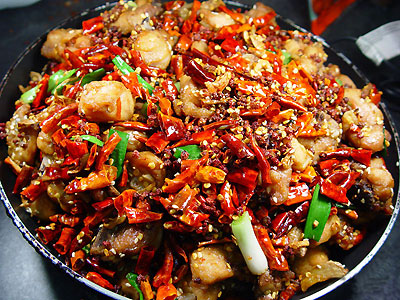
Source: www.heatculinary.com
Perhaps one of the most remarkable things about the Sichuan philosophy in food is its wide diversity. If you named any number of traditional Sichuan dishes, most of them would be completely different from each other, both in taste and cooking method. There is a saying (whose cleverness unfortunately doesn’t translate all that well to English, although its meaning is felt) ‘One dish with one flavor, with one hundred dishes come hundred flavors.‘
As noted, Sichuan food is most well-known for its hot and spicy flavors, though it may sport sweet and sour flavors too.
And the Sichuan palate recognizes several important flavors which are referred to as “The Five Fragrances”
These five are:
Fennel
Pepper
Anise Seed,
Cinnamon and clove
Chili and Sichuan pepper. Read here why Sichuan Peppers make your lips go numb.
Seasonings of Sichuan Cuisine
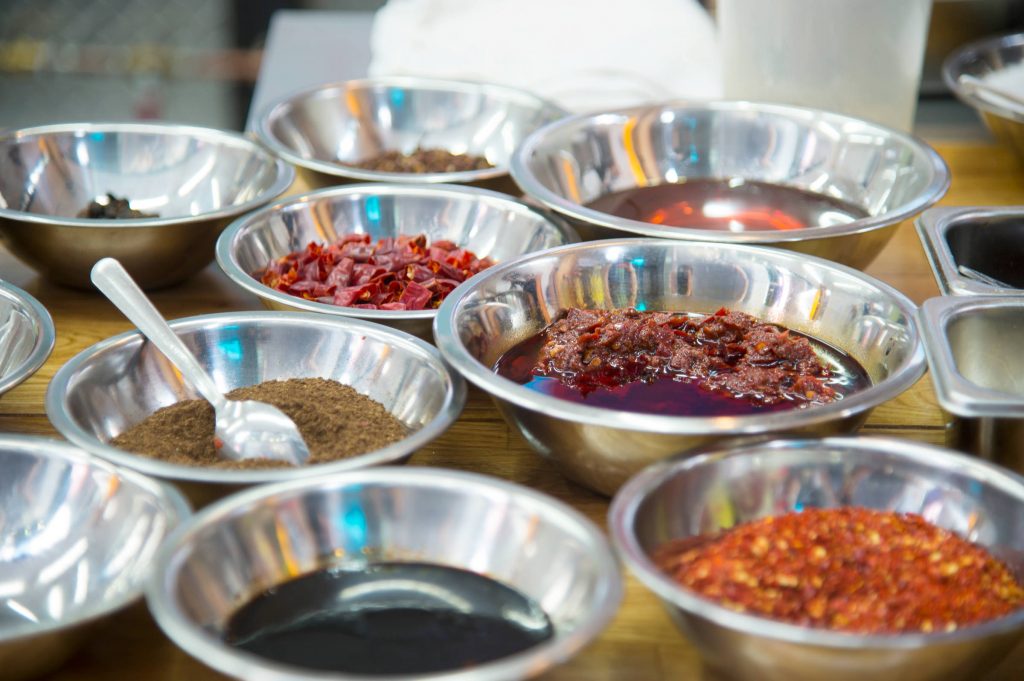
Source: www.confuciuswasafoodie.com/
Separately from the Five Fragrances, Sichuan cuisine simply cannot do without Sichuan pepper, black pepper, chili, broad bean chili paste, shallots, ginger, and garlic.
These are must-have seasonings that bring out the intense flavors the dishes are renowned for. Without them you simply have spicy food. They are like the Trinity in cajun cooking.
Balancing the Five Fragrances with the traditional seasonings (especially the lip numbing Sichuan Pepper) is pretty much the heart and soul of Sichuan Cuisine, and as noted helps produce a prodigious variety of flavors and dishes.
Cooking Methods

Source: www.chinadiscovery.com
Sichuan cuisine favors a fast and furious approach to the actual cooking. It is not a tradition that features much fermentation, chemical methods of cooking like Ceviche, or multistep processes like cheese making or the like. Instead, Sichuan chef’s prefer fast cooking methods like stir-frying, steaming, braising, baking.
The most common is fast-frying.
Finally, the Sichuan chef is often measured against their preparations of the most famous traditional Sichuan dishes.
Here is a great list of some of the fiery traditional fare.

Source: www.chinasichuanfood.com
- ‘Pockmarked Granny’ Bean Curd (Mapo Tofu)
Mapo (/maa-por/) tofu is bean curd served in a chili-and-bean-based sauce — usually a thin, oily, and bright red suspension — and often topped with minced meat; It is often seasoned with water chestnuts, onions, other vegetables, or wood ear fungus.
The taste of mapo tofu is charitably described as ‘numbing,’ Its super hot by tradition, fresh, tender and soft, aromatic and flaky.
Mapo tofu is not exclusive to Sichuan but this dish is. It is also one of the most exported dishes of the Chinese diaspora.
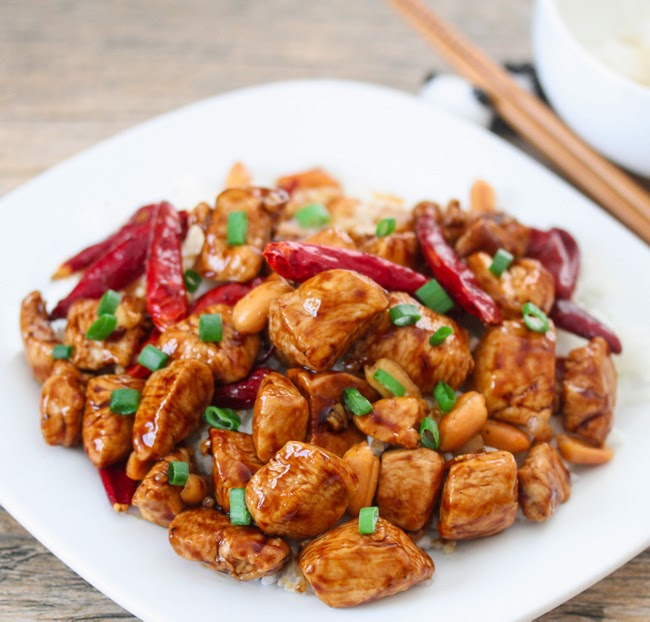
Source: kirbiecravings.com/kung-pao-chicken/
- Spicy Diced Chicken (Kung Pao Chicken)
Kung Pao Chicken is actually its Cantonese name, and read as Gongbao Jiding (宫保鸡丁 /gong-baow jee-ding/ ‘Palace-Protected Chicken Cubes’) in Mandarin. But it is Sichuan in origin.
The dish is prepared by frying diced chicken and dry red pepper with golden peanuts. Spicy diced chicken is more popular among Westerners than its counterpart mapo tofu.
Like Cajun or Thai spice afficianados, the Sichuan chefs brag that it is the more popular of the two because it is usually less spicy, or not at all, when served abroad and outside Sichuan province—because Fiery, lip numbing spice and all.
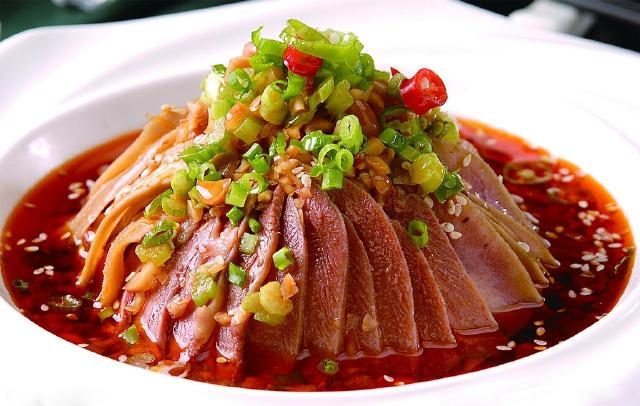
Source: www.thedrinksbusiness.com
- Fuqi Fei Pian (‘Husband and Wife Lung Slices’)
Fuqi Fei Pian, the brainchild of Guo Zhaohua, is made of thinly sliced beef (or bovine lung or tongue) seasoned with chili oil.
Like the name suggests, there is a story behind this famous Sichuan dish—one far less grisly than it would suggest.
Zhaohua and his wife sold their vinegar-ized beef slices for a living from a street cart. As their beef slices were aromatic and delicious, They became one of the most popular food items in the city. In honor of the couple, patrons coined the name — Husband and Wife Lung Slices.
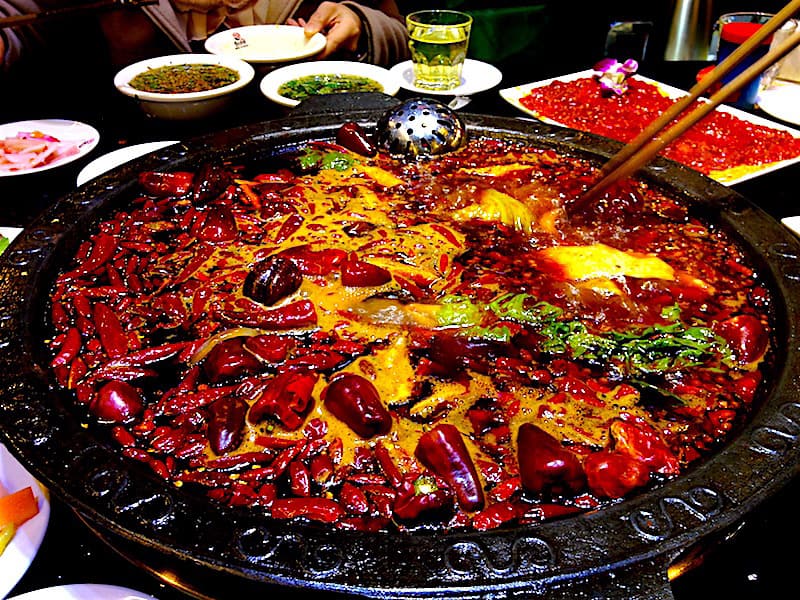
Source: www.thefooddictator.com
- Sichuan Hot Pot
Sichuan hotpot, like most of the cuisine in this humid and populous province, is numbingly spicy. The broth is flavored with chili peppers and other strong-tasting herbs and spices.
The main ingredients include hot pepper, Chinese crystal sugar, and wine. Slices of kidney, chicken breast, beef tripe, goose intestines, spring onion, soy bean sprouts, mushrooms, duck, and sea cucumber are the usual meats used in the dish.
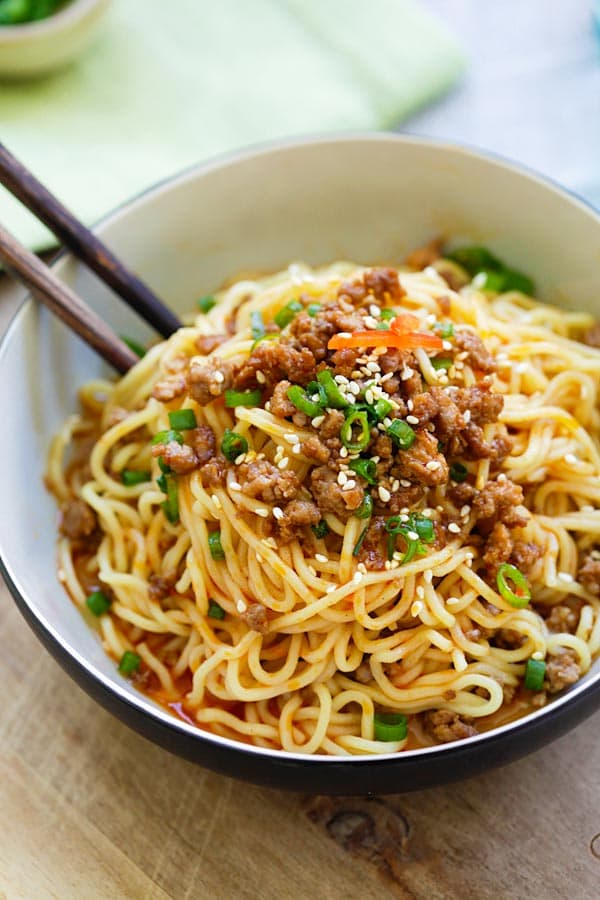
Source: rasamalaysia.com
- Dandan Mian (Dandan Noodles)
Dandan noodles is yet another quintessential Sichuan dish that has received international attention and hence may come in different versions.
Unlike the usually watered down ones outside Sichuan, dandan noodles in Sichuan province embody a combustion of flavors — savoury, nutty, spicy, and smoky. The noodles are drenched in chili oil with vegetables, Sichuan pepper, and minced pork served on top.
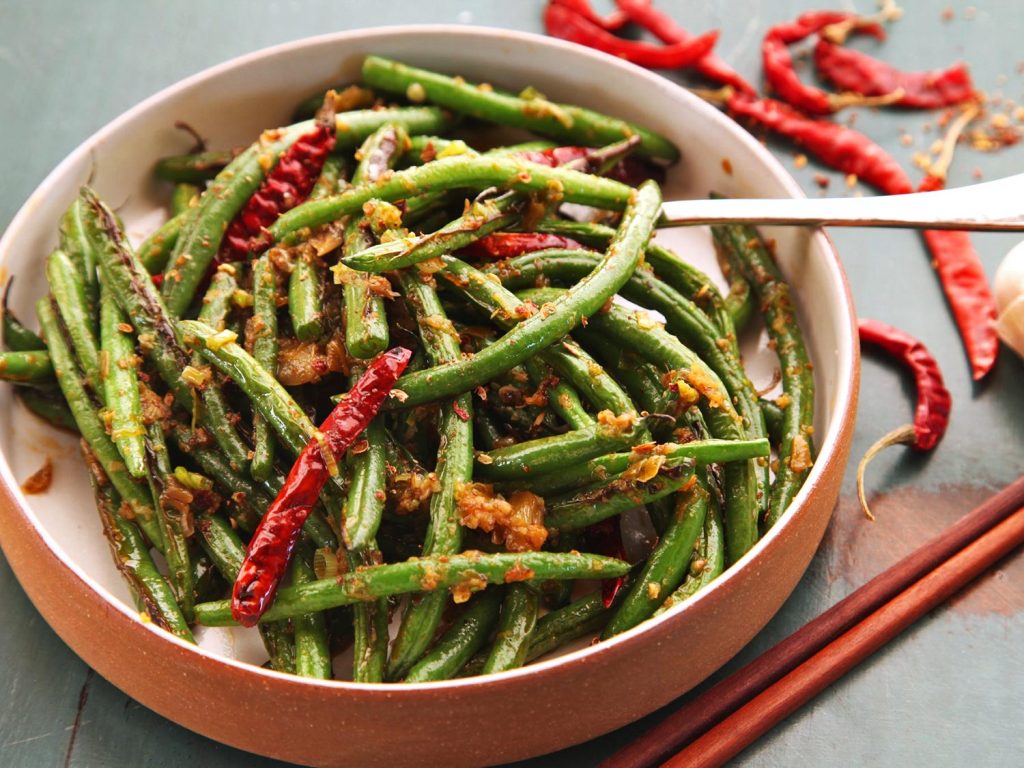
- Ganbian Sijidou (Dry Stir Fried Green Beans)
There has been a misconception about this dish being oily and heavy. However, when done right in Sichuan province, the stir-fried green beans are supposed to be light and crunchy. Also known as snap beans or string beans, the beans are prepared with the cooking technique “dry-frying” where lesser oil is needed and a longer frying time required. This dehydrates the beans, creating a crispy outer layer.
The beans are subsequently tossed sufficiently in chili-flavored oil, Sichuan pepper, scallions, garlic, and ginger.
Sichuan Cuisine is fairly easy to understand and recognize. Strong flavors, generally very fiery. Part of the dining experience is the aromas (or the five fragrances) and the use of a pepper that literally makes your lips and mouth go numb.
In our next installment we will be discussing what is seen as the most refined and artistic of the Great Cuisines of China. Jiangsu Cuisine
Chinese: 苏菜 Sūcài
- Fresh, moderately salty and sweet, precise cooking techniques, favoring seafood, soups and artistic, colorful presentation
Jiangsu Province and China’s biggest city, Shanghai, have a very refined gourmet cuisine that is often served at government banquets.
ChinesePod
Latest posts by ChinesePod (see all)
- Tone Change Rules for Common Chinese Words - December 12, 2019
- ChinesePod’s Founding Story - October 10, 2019

